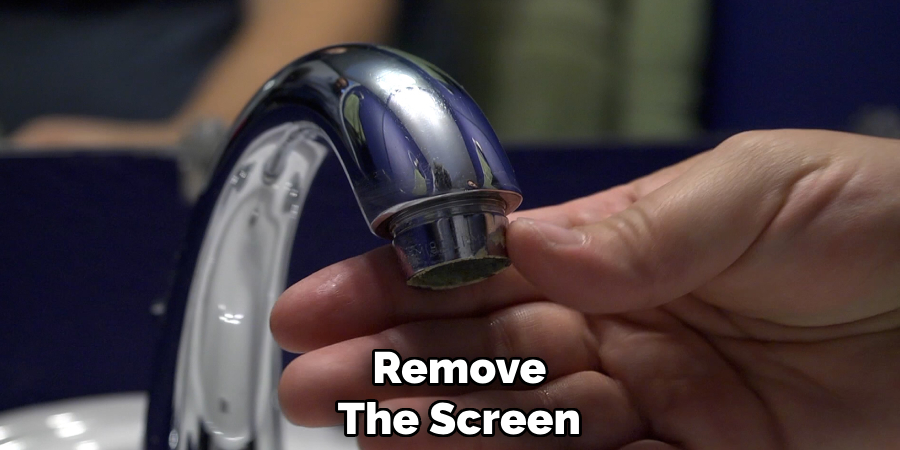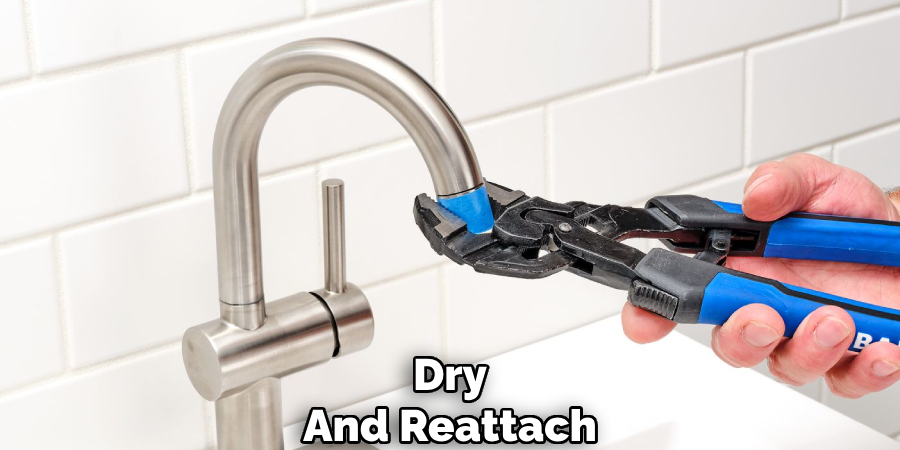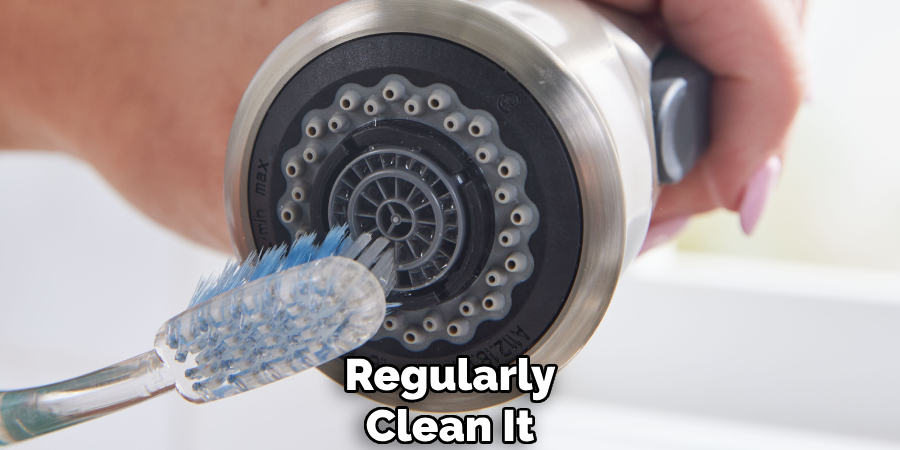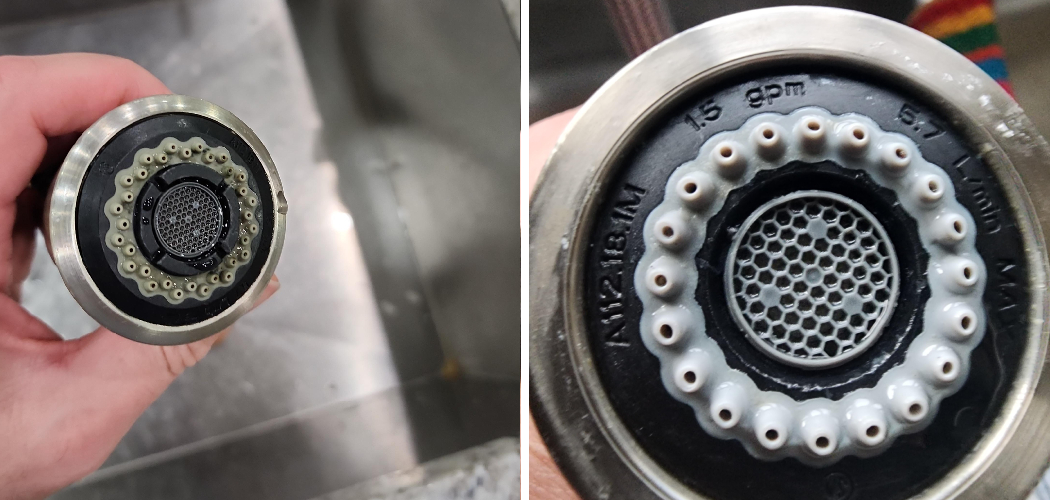Keeping your Moen faucet in excellent condition ensures smooth water flow and extends its lifespan. Over time, debris and mineral deposits can accumulate in the faucet screen, affecting performance and water pressure. Fortunately, cleaning the screen is a straightforward process that can be completed with just a few tools and a little time.

This guide on how to clean a Moen faucet screen will walk you through the steps to properly clean your Moen faucet screen and maintain its optimal functionality.
Why is It Important to Clean Your Moen Faucet Screen Regularly?
Regularly cleaning your Moen faucet screen has several benefits:
Improves Water Flow:
As mentioned before, mineral deposits and debris can build up in the screen over time, clogging the small holes and reducing water flow. By cleaning the screen, you remove these obstructions and ensure a smooth and strong water flow. This will make your daily tasks like washing dishes or filling up water bottles much easier and quicker.
Prevents Damage to Faucet Parts:
A clogged faucet screen can cause stress on the internal parts of your Moen faucet, leading to leaks and other issues. By regularly cleaning the screen, you prevent this buildup and potential damage to your faucet, saving you from costly repairs or replacements in the future.
Maintains Water Quality:
When mineral deposits and debris accumulate in the screen, they can also affect the quality of your water. These substances may alter their taste or even make it unsafe to drink. Regularly cleaning your Moen faucet screen ensures that only clean and safe water flows through your tap.
Prevents Clogging:
Another benefit of cleaning your Moen faucet screen is that it helps prevent clogs. When debris and mineral deposits build up in the screen, they can obstruct water flow and cause backups in your sink or shower. By regularly cleaning the screen, you reduce the risk of clogs and ensure a smooth and uninterrupted water flow.
Improves Aesthetic Appeal:
A clean faucet not only functions better but also looks better. Mineral buildup and debris on the screen can make your faucet appear dull, dirty, and unappealing. Regularly cleaning the screen keeps it looking shiny and new, enhancing the overall aesthetic appeal of your bathroom or kitchen.
Needed Materials
To clean your faucet screen, you will need some basic materials that are easily accessible. These include:
White Vinegar:
White vinegar is a natural cleaning agent that is effective in removing mineral buildup and debris from faucet screens. It is also safe to use on most types of faucets.
Bowl or Bucket:
You will need a shallow bowl or bucket to soak the screen in the white vinegar solution.
Toothbrush:
A toothbrush with soft bristles can be used to scrub away stubborn buildup on the screen.
Clean Cloth:
After soaking and scrubbing, you will need a clean cloth to wipe down the screen and remove any remaining residue.
6 Step-by-Step Guides on How to Clean a Moen Faucet Screen
Step 1: Remove the Screen
To begin, locate the faucet screen at the tip of the faucet spout. Depending on your faucet model, you may need to use an aerator key or a pair of pliers to carefully unscrew the screen. Wrap the pliers with a cloth or tape to prevent scratching the surface of your faucet.

Turn the screen counterclockwise to remove it. Once removed, place the screen on a clean surface to prepare for the next step.
Step 2: Soak the Screen
Fill a small bowl with warm water and add a few drops of mild dish soap or white vinegar. Place the faucet screen into the solution, ensuring it is fully submerged.
Allow the screen to soak for 15-20 minutes to loosen any debris, mineral deposits, or buildup. This step will make it easier to clean the screen thoroughly in the following steps.
Step 3: Scrub with a Toothbrush
After soaking, remove the screen from the solution and place it on a clean surface. Using a soft-bristled toothbrush, gently scrub the screen to remove any remaining debris or mineral deposits. Focus on all sides of the screen, applying light pressure to avoid damage.
If needed, dip the toothbrush into the cleaning solution to help dislodge stubborn buildup. Once the screen is thoroughly cleaned, rinse it under warm running water to wash away any residue.
Step 4: Rinse with Warm Water
Hold the cleaned screen under warm running water to ensure all traces of the cleaning solution and loosened debris are completely removed. Be thorough in rinsing all sides of the screen, as any leftover residue could impact its performance.
Make sure the water flow is gentle to prevent any accidental damage. Once rinsed, inspect the screen to confirm it is clean and free of any remaining deposits.

Step 5: Dry and Reattach
Gently shake off any excess water from the screen, being careful not to bend or damage it. Use a soft, lint-free cloth to pat the screen dry, ensuring no moisture remains, especially around the edges. Alternatively, allow the screen to air dry in a clean, well-ventilated area away from direct sunlight or heat sources to prevent warping.
Once the screen is thoroughly dry, carefully reattach it to its original position, making sure it is securely in place for proper functionality.
Step 6: Regular Cleaning
To prevent buildup on your faucet screen in the future, it is important to regularly clean it. This can be done once a week or as needed. Simply follow the steps above to remove any buildup and rinse with warm water.
Following these steps on how to clean a moen faucet screen will help keep your faucet running smoothly and prevent any potential clogs. In addition, regular cleaning can also improve the overall appearance of your faucet.
Additional Tips
- For tougher buildup, you may need to use a mixture of equal parts white vinegar and water instead of dish soap.
- If you are unable to detach the faucet screen, you can still try cleaning it by using a toothbrush soaked in soapy water and gently scrubbing over the screen while it is still attached.
- It’s important to regularly clean your faucet screens, as they can collect debris and buildup over time, leading to decreased water flow.
- If you notice any leaks or damaged parts while cleaning, it’s best to contact a professional plumber for repairs.
- It’s also a good idea to check your faucet regularly for any potential issues, such as loose screws or worn out seals, which can also affect the performance of your faucet.
- Consider investing in a water softener if you have hard water in your area, as this can help prevent mineral buildup on your faucets and other fixtures.
- If you have a pull-out faucet with a sprayer function, make sure to clean the sprayer head as well by soaking it in vinegar or using an old toothbrush to remove any buildup.
- Lastly, don’t forget to turn off the water supply and drain any remaining water from your pipes before going on vacation or during colder months to prevent frozen pipes.

Frequently Asked Questions
Q1: How Often Should I Clean My Faucets and Fixtures?
A1: It is recommended to clean your faucets and fixtures at least once a week to prevent any buildup or stains. The frequency of cleaning may vary depending on usage, water quality, and other factors.
However, it is important to regularly clean and maintain your faucets and fixtures to ensure their longevity and optimal performance.
Q2: Can I Use Harsh Chemicals to Clean My Faucets?
A2: Avoid using harsh chemicals as they can damage the finish of your faucets. Instead, opt for natural cleaning solutions like vinegar or lemon juice to safely remove stains and buildup.
If you must use a cleaner, make sure it is specifically designed for the type of material your faucet is made from and always follow the manufacturer’s instructions.
Q3: How Can I Prevent Rust from Forming on My Faucets?
A3: To prevent rust, make sure to dry your faucets thoroughly after each use. You can also apply a layer of car wax or clear nail polish to create a protective barrier against moisture. It is also important to regularly inspect and maintain your plumbing system, as any leaks or standing water can lead to rust formation.
Q4: What Should I Do If My Faucet Is Dripping?
A4: A dripping faucet could be caused by a worn-out washer or seal. It is best to replace these parts as soon as possible to avoid wasting water and potentially causing further damage to your faucet.

Conclusion
Maintaining your faucets not only ensures their longevity but also helps save water and prevent costly repairs.
By following simple preventative measures on how to clean a Moen faucet screen, addressing issues like rust and leaks promptly, and keeping your faucets clean, you can enjoy their functionality and aesthetic appeal for years to come. A little care goes a long way in preserving the quality and efficiency of your fixtures.

